Nectarine
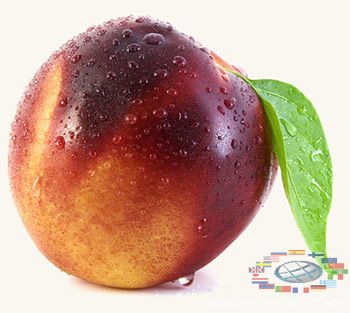
Recently, in our shops appeared 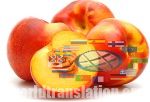 many fruits and vegetables, which we have never seen before. So people are wondering, what is it? It seems that a fruit looks like some fruits that are already known to us and at the same time much differents from them. Whether it is a hybrid produced by crossing, whether it is unknown to us domesticated wild species. For example, such story is typical for nectarine.
many fruits and vegetables, which we have never seen before. So people are wondering, what is it? It seems that a fruit looks like some fruits that are already known to us and at the same time much differents from them. Whether it is a hybrid produced by crossing, whether it is unknown to us domesticated wild species. For example, such story is typical for nectarine.
 Nectarine got special popularity in the 80's of the last century, when appeared its large (weighing 150-200 g) yellow fleshy varieties with very attractive appearance. Some suggest that it is a hybrid of peach with plum or plum with peach, while others argue that it is a separate species. The firts and second are partly right, but in fact nectarine - is a separate species of peach, or more precisely - persica nucipersica.
Nectarine got special popularity in the 80's of the last century, when appeared its large (weighing 150-200 g) yellow fleshy varieties with very attractive appearance. Some suggest that it is a hybrid of peach with plum or plum with peach, while others argue that it is a separate species. The firts and second are partly right, but in fact nectarine - is a separate species of peach, or more precisely - persica nucipersica. 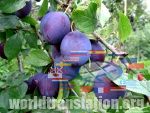 We've learned that peach is covered with fuzz. But, though rarely, can be found a kind of peach with absolutely smooth peel, like in plums. Therefore, it is called persica nucipersica. This species appeared a long time ago and during its formation really participated one kind of plum - Chinese plum. Generally nectarine - a natural complicated multi-species hybrid, which after a long period of natural selection has formed a separate species. According to morphological characteristics, biological characteristics and chemical composition, it is closer to the ordinary peach, and got its name for delicious taste of the fruit.
We've learned that peach is covered with fuzz. But, though rarely, can be found a kind of peach with absolutely smooth peel, like in plums. Therefore, it is called persica nucipersica. This species appeared a long time ago and during its formation really participated one kind of plum - Chinese plum. Generally nectarine - a natural complicated multi-species hybrid, which after a long period of natural selection has formed a separate species. According to morphological characteristics, biological characteristics and chemical composition, it is closer to the ordinary peach, and got its name for delicious taste of the fruit.
On the world market nectarine enjoys much greater demand than a peach, because it is much sweeter and has higher dietary values. In 1866 persica nucipersica got into Russia. The first plants were planted in the Nikitsky botanical garden. During Soviet times E. Shoferistov - an employee of Nikitsky Botanical Garden has collected a huge collection of persica nucipersica varieties. From here it spread all over the Crimea, entered the Western Ukraine and Moldova, south of modern Russia. The work with them in the Nikitsky botanical garden continues to this day.
In 1866 persica nucipersica got into Russia. The first plants were planted in the Nikitsky botanical garden. During Soviet times E. Shoferistov - an employee of Nikitsky Botanical Garden has collected a huge collection of persica nucipersica varieties. From here it spread all over the Crimea, entered the Western Ukraine and Moldova, south of modern Russia. The work with them in the Nikitsky botanical garden continues to this day.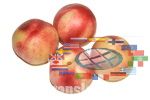 Nectarine is thermophilic culture, so it can only grows in areas with mild winters, where temperatures rarely fall below -5 ° C and there is no spring and autumn frosts. Perhaps, over time, it will be able to get varieties with a higher winter hardiness, but while in conditions of the middle zone is almost impossible to grown nectarines in open ground. Technology of its cultivation is almost the same as a peach, but many varieties are more susceptible
Nectarine is thermophilic culture, so it can only grows in areas with mild winters, where temperatures rarely fall below -5 ° C and there is no spring and autumn frosts. Perhaps, over time, it will be able to get varieties with a higher winter hardiness, but while in conditions of the middle zone is almost impossible to grown nectarines in open ground. Technology of its cultivation is almost the same as a peach, but many varieties are more susceptible 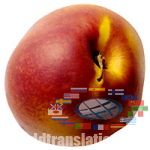 to fungal diseases (powdery mildew, fruit rot). This should be considered when planting nectarine and provide protection from diseases, in particular, it is better to plant it far away from peach plantings.
to fungal diseases (powdery mildew, fruit rot). This should be considered when planting nectarine and provide protection from diseases, in particular, it is better to plant it far away from peach plantings.
Nectarine is also of interest as an ornamental plant. In the spring, during the flowering, its trees with beautiful, bright and large flowers on short stalks are simply amazing. The flowers smell with sweet, delicate aroma, bees and other insects actively visiting they. In summer, during crop ripening, trees delight with bright juicy fruits.
Dessert taste and unique aroma, pleasant, gentle, melting juicy fruit, simpleness of 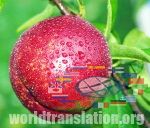 conservation (you don't need to remove the peel with fruit, unlike the peach) contribute to popularity nectarine. Candied fruit, jams, dried fruits are prepared from its fruits. They can be frozen whole, be gathered in the form of pasta and slices in syrup. Fresh fruits of nectarines belong to low-calorie foods, so they can be used without restriction for both adults and children.
conservation (you don't need to remove the peel with fruit, unlike the peach) contribute to popularity nectarine. Candied fruit, jams, dried fruits are prepared from its fruits. They can be frozen whole, be gathered in the form of pasta and slices in syrup. Fresh fruits of nectarines belong to low-calorie foods, so they can be used without restriction for both adults and children.